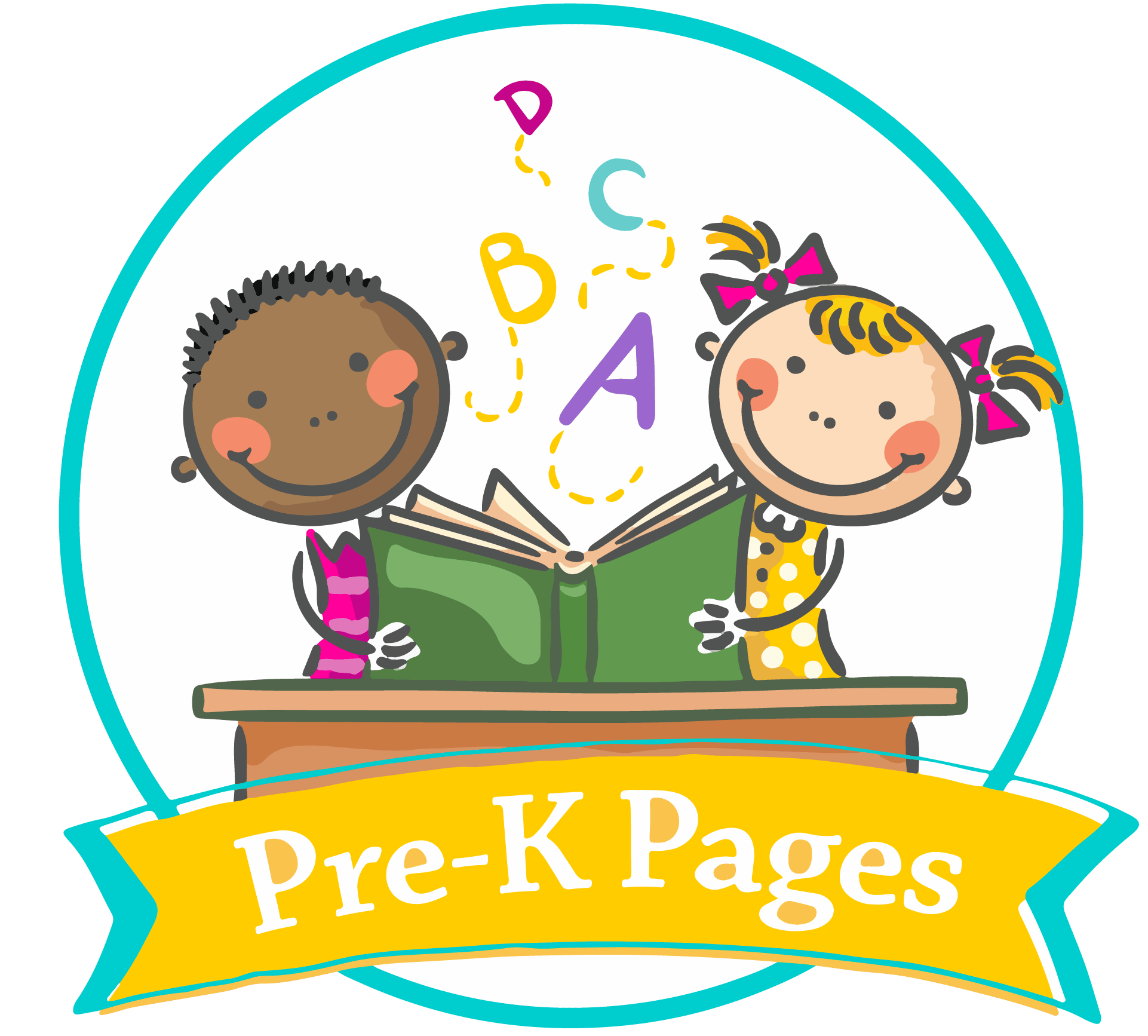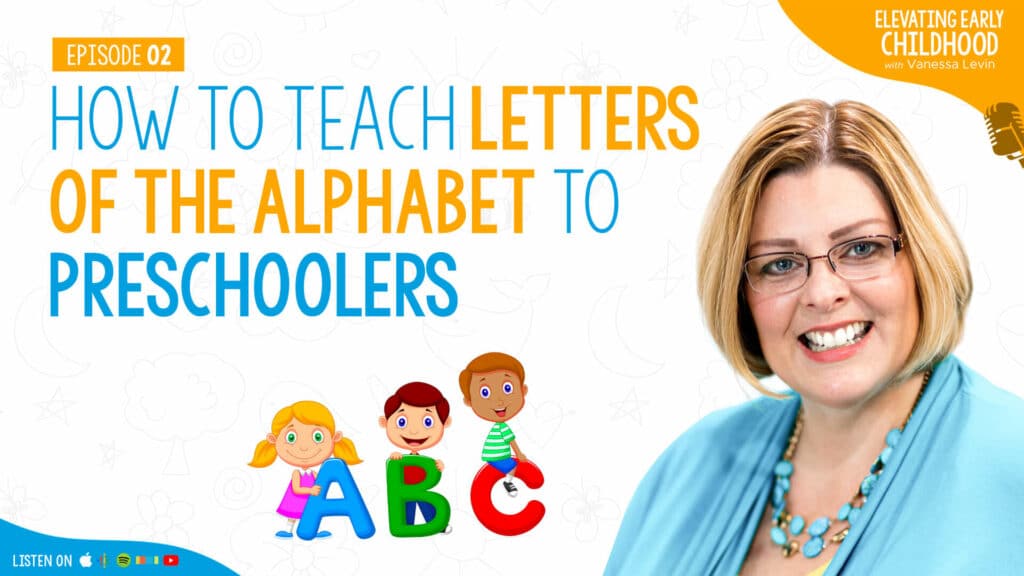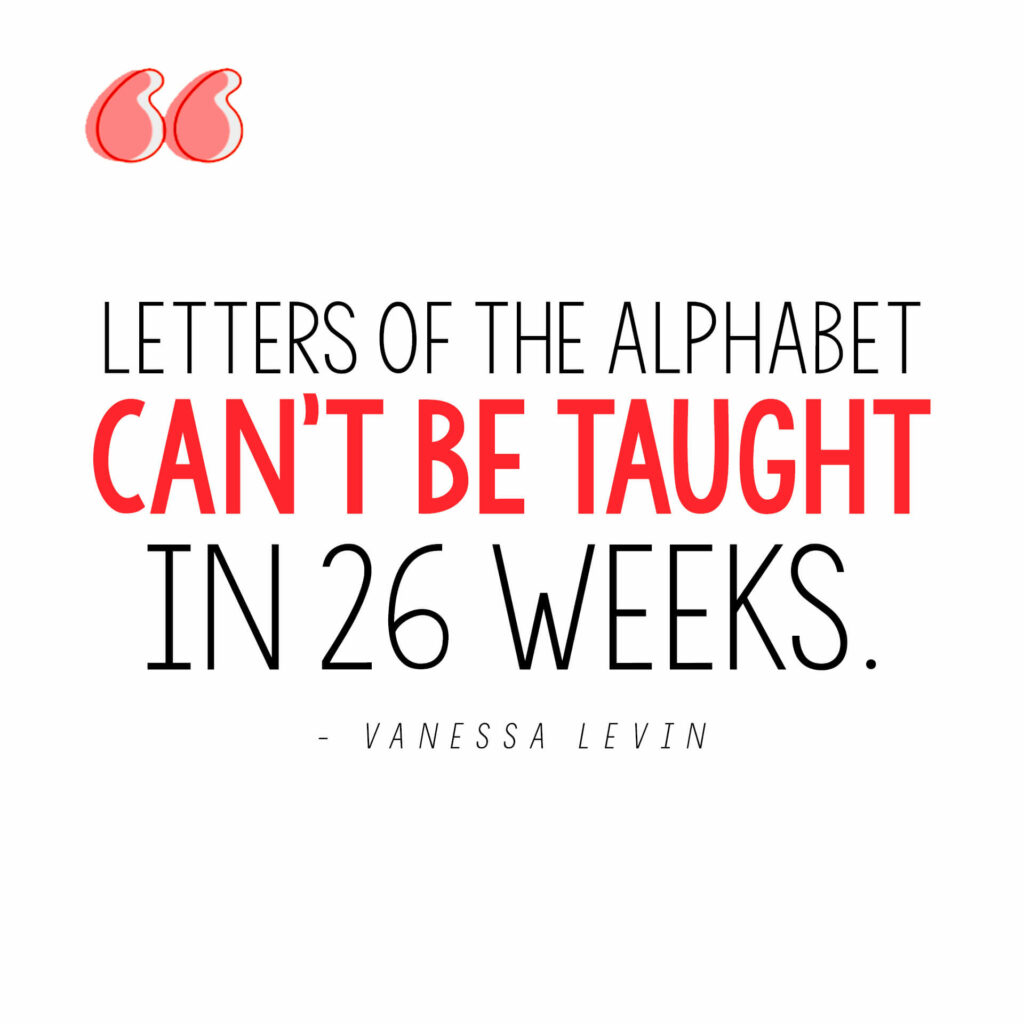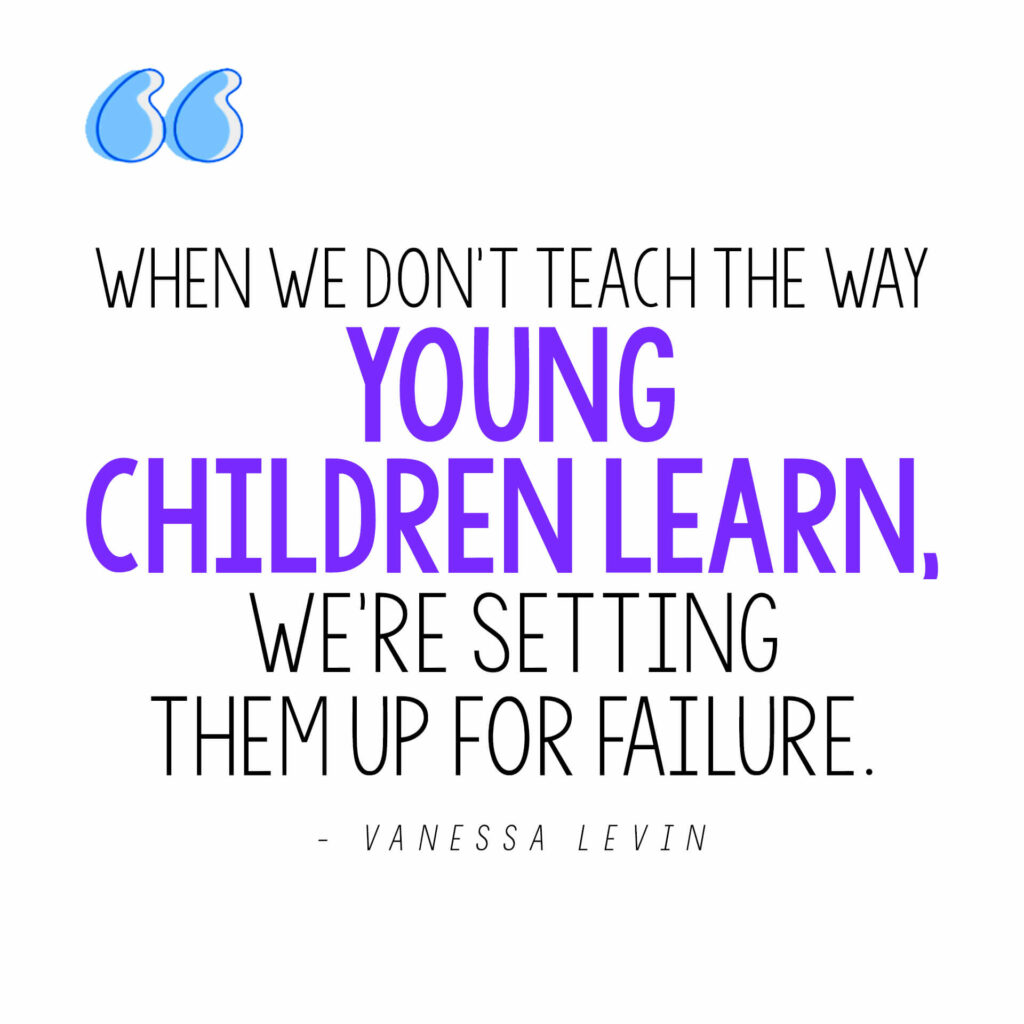One of the biggest challenges teachers face with teaching the alphabet is getting the letters to stick.
You spend weeks teaching, following your curriculum, doing everything by the book. Everything seems to be going great. The kiddos are getting it! And then…
Poof! They forget all of it! As if you’ve never even mentioned it before! Has this ever happened to you? Because it’s happened to me plenty of times.
When I was a young student teacher, I had an opportunity to shadow a kindergarten teacher following the Letter of the Week curriculum. Remember—this was a long time ago, so back then, it was considered a perfectly suitable way of teaching children the alphabet.
And after just several weeks of working there, it became clear just how ineffective this method was. The kids struggled to retain what they’ve learned, and some didn’t know any letters whatsoever!
Luckily, these days we know better!
Children do NOT learn the alphabet linearly, from A to Z. It is a global process that requires a lot more than rigid schedules, worksheets, and a funny letter P-themed costume.
So in this episode, I will share an excellent method for teaching children the alphabet, which is fun, effective, and backed by research.
Let’s dive in!
Could a Plan for Teaching the Alphabet Be Making Your Job Harder?
It sounds a bit paradoxical, but it happens!
You always need a plan, that’s 100% true. Still, if the plan you’re using isn’t aligned with how children learn, it WILL make your job challenging and inefficient.
It’s kind of like pushing a giant boulder uphill. No matter how hard you’re going at it, you’re still barely moving, wasting vast amounts of energy in the process.
Let me share a little more about my first encounter with Letter of the Week. My assignment was to shadow a kindergarten teacher for a semester, learn the ropes and take over in the next one.
Letter of the Week is a 26-week long curriculum that is supposed to help you teach letters of the alphabet to preschoolers and young children. Each week, you dedicate your time to teaching a single letter, from A to Z, using predefined activities and worksheets.
I started out working with children who haven’t mastered certain concepts yet. And somewhere around the letter “F,” one thing became clear: they weren’t REALLY learning the letters!
We worked on “F” for every single day of the week, and on Friday, some kids still didn’t know it. And on Monday, we moved on to “G,” and they weren’t getting that one either.
Something was clearly off.
I was getting worried, and all kinds of questions were rushing through my mind… When are they going to learn “F?” Do they even know ANY of the letters?
Obviously, the system wasn’t working. But when I consulted with my mentor, I always got the same answer: “Some kids just take time, don’t worry about it!”
And I was right to worry—because that’s not how children learn letters!
How Young Children Learn Letters of the Alphabet
When something isn’t working, you can’t just work harder and hope it gets better. You need to change your approach.
Letter of the Week doesn’t work, and it never did. What we didn’t know at the time was that learning the alphabet is not a linear process. It happens globally and requires so much more.
Another important finding was that children learn the letters at their own pace. Some learn quicker than others, and that’s perfectly OK. However, holding all of them to a strict 26-week schedule is not.
Research definitively shows that’s not how young children learn.
Children learn the letters of the alphabet as those letters become meaningful to them. And to each child, as they’re growing up, different things will become meaningful and at different times.
That is why we need to teach smarter instead of harder. And we do that by aligning our curriculum with how young children learn.
It’s how we go from pushing a boulder uphill to nudging it downhill and letting gravity do the rest. So much easier, right?
Top Tips for Teaching Letters of the Alphabet to Preschoolers
At this point, you might be expecting this new approach for teaching letters to preschoolers to be incredibly complicated. Far from that—it’s so simple!
It might even seem too simple! But it really is how young children learn.
You just have to ask yourself, what do most preschool children find the most meaningful? How about their own names?
Teaching children the letters in their name first is a great way to increase retention.
But what if you have a huge class? Well, the great thing about it is that there are only 26 letters of the alphabet. So some kids are bound to have the same letters in their name, which makes it a bit easier.
Start slow and focus on only the first letter of their name. As they begin to learn, the process will be much quicker BECAUSE it’s so meaningful, fun, and memorable.
That’s how you hook them in and set them up for success!
If you’d like more tips on how to teach the alphabet to young preschoolers, you can download my FREE Literacy Essentials Guide here!




